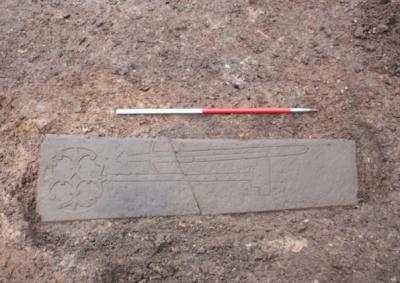Medieval knight remains found in Edinburgh car park

An elaborately decorated sandstone slab bearing markings of a member of the nobility – the carvings of the Calvary Cross and an ornate sword.
The skeleton of a medieval knight have been discovered underneath a car park in Edinburgh's Old Town while it was being demolished.
The knight’s remains have also revealed the exact location of Blackfriars Monastery, which was founded in 1230 by Alexander II – king of Scotland from 1214 to 1249 – before it was destroyed during the Reformation.
Ross Murray, the archaeologist who found the grave, studied at the university’s former archaeology building, which until 2010 was located at High School Yards, just a few feet from where the knight’s grave was discovered. He said: “We knew the history of the High School Yards site while we were studying here, but I never imagined I would be back here to make such an incredible discovery.
“We used to take breaks between classes just a few feet away in the building’s doorway and at that time the grave was lying under the car park.”
Mr Murray is working as part of a team for Edinburgh-based Headland Archaeology, which is carrying out archaeological services for the project.
The excavation also revealed several more human burials, including children, with the bodies lying in an east-west location, which is typical of Christian burials.
The burial sites will be fully excavated and remains will be removed from the site before being re-interred at an appropriate location.
Richard Lewis, culture convener at Edinburgh City Council, said that the council is aiming to preserve the remains of the monastery and the 16th-century high school in situ due to their potential national significance as excavation would lead to their complete destruction.
“We hope to find out more about the person buried in the tomb once we remove the headstone, but our archaeologists have already dated the gravestone to the 13th century.
“This find has the potential to be one of the most significant and exciting archaeological discoveries in the city for many years, providing us with yet more clues to what life was like in medieval Edinburgh.”
Andy Kerr, director of the ECCI, said: “This knight is an extraordinary and exciting find.”



 Nadine Lee and Donald like this.
Nadine Lee and Donald like this.